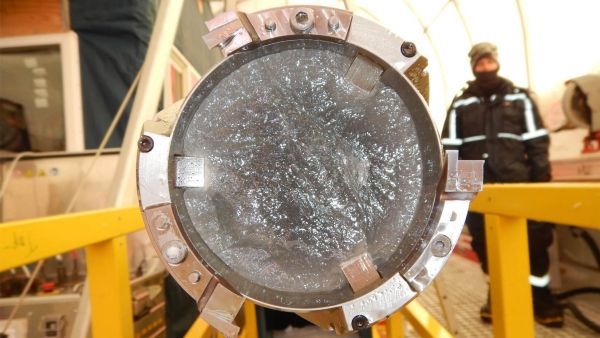Understanding how the Earth’s volcanic activity interacts with the climate system, as well as volcanic hazard mitigation studies and reconstructions of how past volcanic events have affected human history often rely on detailed records of past volcanic eruptions. Unfortunately, in many parts of the world, historical records are sporadic, short and not well documented, according to Andrei Kurbatov, associate professor at the University of Maine School of Earth and Climate Sciences and Climate Change Institute.
In the last decade, Kurbatov and Martin Yates, electron beam laboratory manager and instructor of Earth sciences at UMaine, in collaboration with Nelia Dunbar and Nels Iverson from the New Mexico Institute of Mining and Technology, developed a method of extracting volcanic ash particles from ice core samples to measure their geochemical composition.
The new methodology provides additional means to refine the history of global volcanism captured in polar ice core records, according to Kurbatov.
Laura Hartman, a graduate student at the CCI, used the methodology while examining microscopic volcanic ash particles in ice core samples from Antarctica’s South Pole. Hartman was advised by Kurbatov and Earth and Climate Sciences assistant professor Alicia Cruz-Uribe. She found several particles from a volcanic interval that in the last three decades was attributed to a volcanic eruption from the Kuwae volcanic center in Vanuatu.
Continue reading at University of Maine
Image via University of Maine


